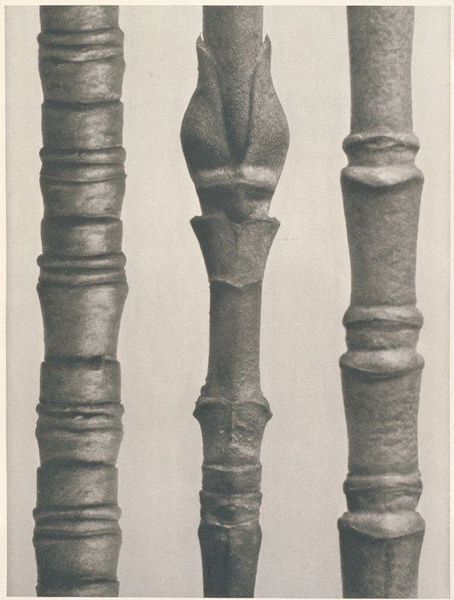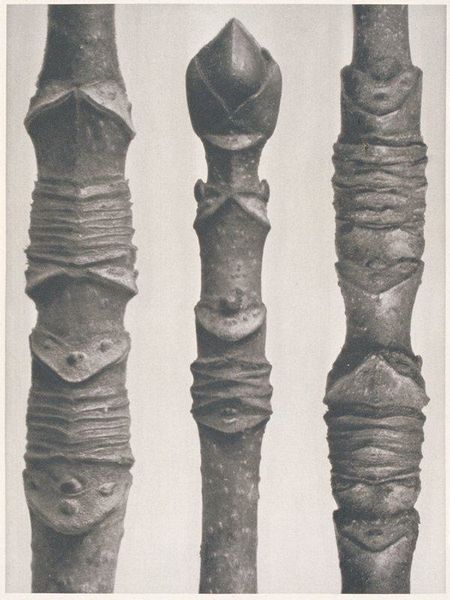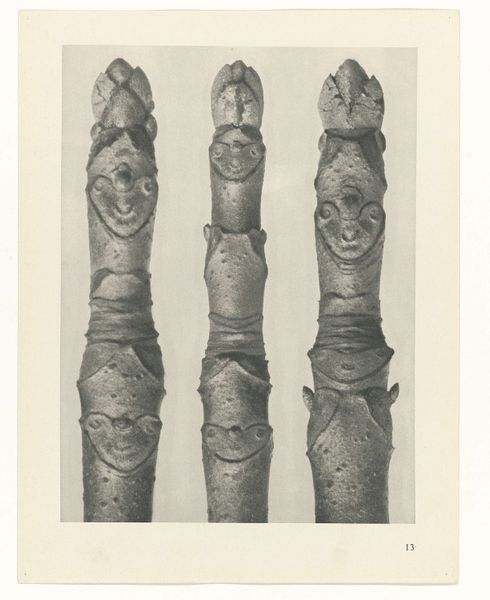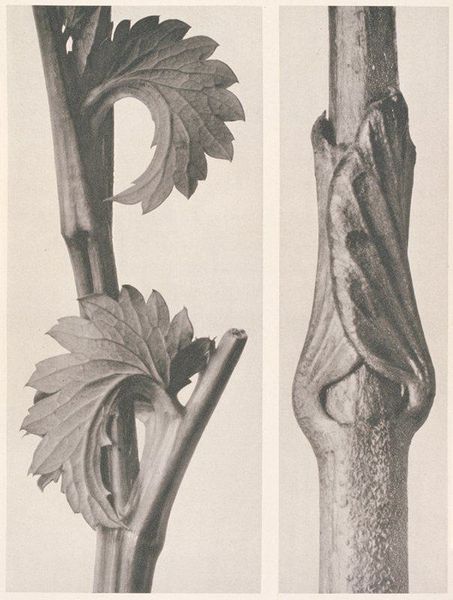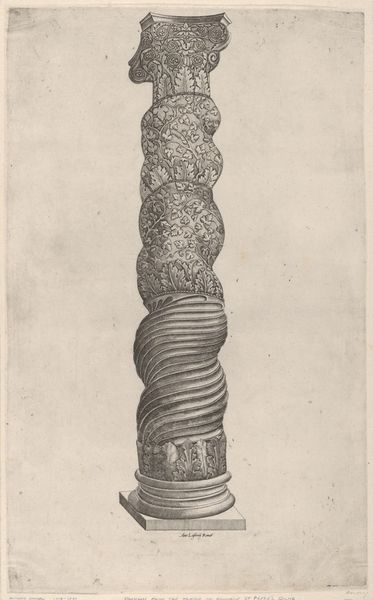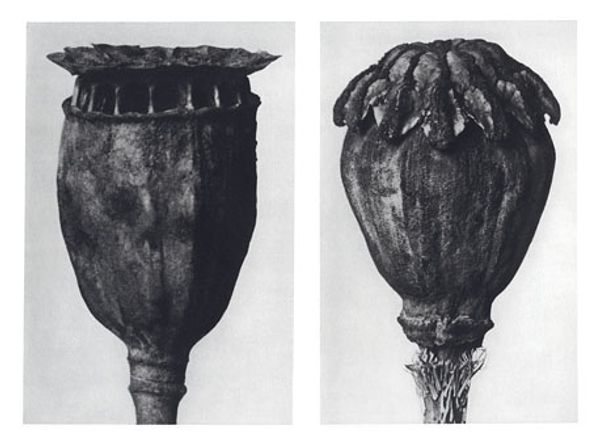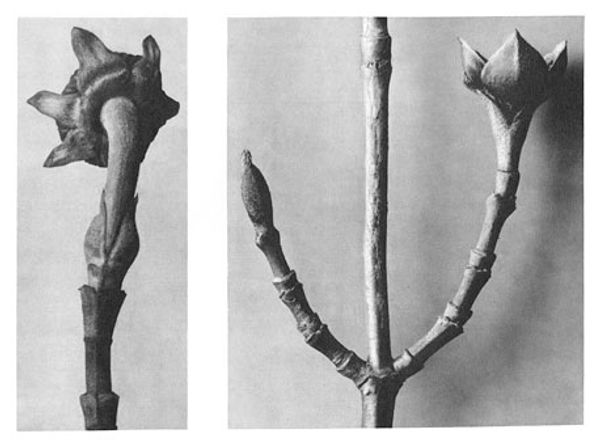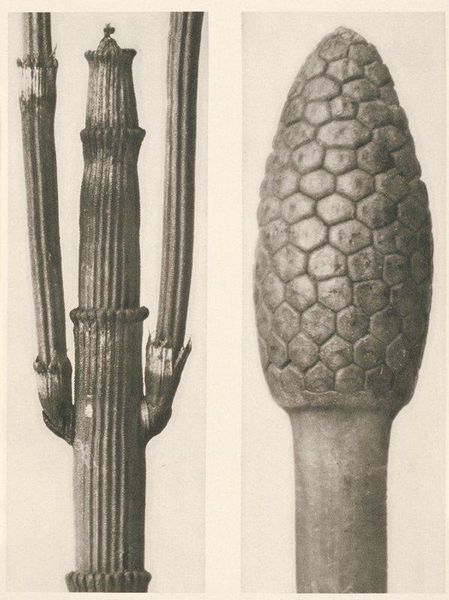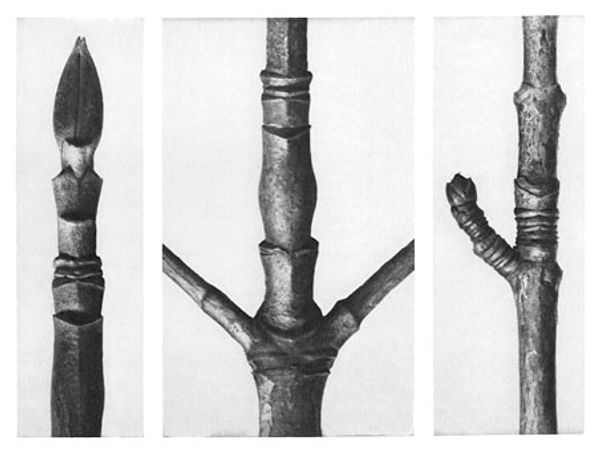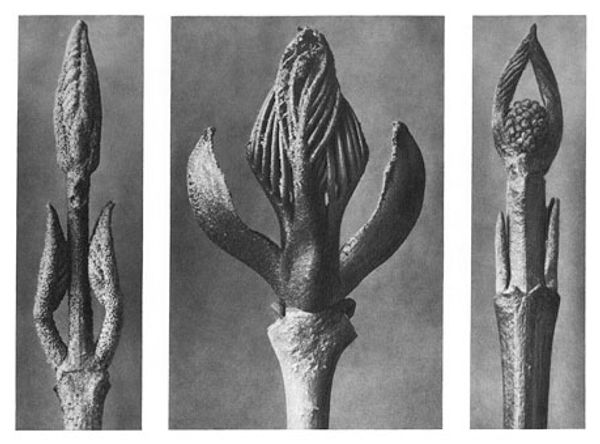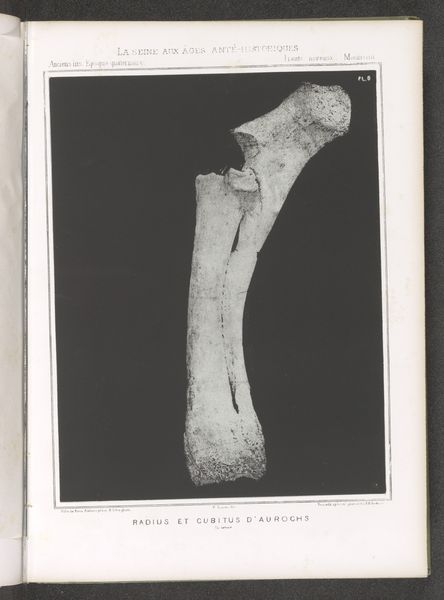
photogram, photography
#
photogram
#
photography
#
geometric
Dimensions: height 312 mm, width 242 mm
Copyright: Rijks Museum: Open Domain
Curator: I'm struck by the strange elegance of this work. Editor: You’re not kidding! It reminds me of some bizarre ceremonial object, or maybe a prop from a lost surrealist film. What are we actually looking at here? Curator: This is Karl Blossfeldt’s “Plantstudie,” created around 1928. It’s a photograph, part of his larger project to document plants using close-up photography as almost architectural studies. Editor: Architectural, yes! Nature as blueprint. I see that now. And in stark black and white. It really strips the plant down to its basic forms. It feels almost… alienating. Did Blossfeldt mean for them to feel this way? Curator: I believe Blossfeldt’s motivation was driven by the educational and design reforms occurring in Germany at the time. He was interested in revealing the underlying geometric structures inherent in nature, perhaps as models for art and industry to emulate. He used photography to elevate these overlooked botanical structures into subjects of high art and scientific interest. Editor: That’s wild! So, it’s both art and science—or maybe art *as* science. The repetition of form is strangely beautiful, once you see past the cold presentation. The way he isolates them gives them an undeniable presence, almost like portraits. Curator: The framing contributes to this impact—we see this form divorced from any familiar background, analyzed like an artifact under study. Think about how photography, particularly in the early 20th century, played a pivotal role in scientific documentation, museum archiving, and constructing notions of objective truth. Editor: Right! It’s like he's saying, "Look! Hidden order! Divine geometry!" So cool! It definitely makes you rethink the everyday plant. It's less about beauty, and more about seeing the hidden architecture all around us. Curator: Precisely, and in doing so, he challenges us to reconsider what we value as visually stimulating, functional, and structurally interesting. Editor: Absolutely, I am not going to look at plants the same way again. Curator: That’s exactly the legacy of this piece; to encourage everyone to consider that the humblest natural things also reflect sophisticated design.
Comments
No comments
Be the first to comment and join the conversation on the ultimate creative platform.
